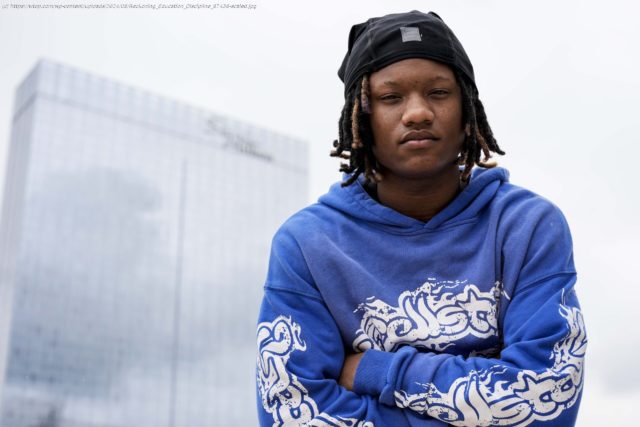Before he was suspended, Zaire Byrd was thriving. He acted in school plays, played on the football team and trained with other athletes. He had never been…
Before he was suspended, Zaire Byrd was thriving. He acted in school plays, played on the football team and trained with other athletes. He had never been suspended before — he’d never even received detention.
But when Byrd got involved in a fight after school one day, none of that seemed to matter to administrators. Byrd said he was defending himself and two friends after three other students threatened to rob them. Administrators at Tri-Cities High School in Georgia called the altercation a “group fight” — an automatic 10-day suspension. After a disciplinary hearing, they sent him to an alternative school.
The experience nearly derailed his education.
“The last four years were a lot for me, from online school to getting suspended,” said Byrd, who started high school remotely during the pandemic. “I could have learned more, but between all that and changing schools, it was hard.”
In Georgia, Black students like Byrd make up slightly more than one-third of the population. But they account for the majority of students who receive punishments that remove them from the classroom, including suspension, expulsion and being transferred to an alternative school.
Those disparities, in Georgia and across the country, became the target of a newly energized reform movement a decade ago, spurred by the same racial reckoning that gave rise to the Black Lives Matter movement. For many advocates, students and educators, pursuing racial justice meant addressing disparate outcomes for Black youth that begin in the classroom, often through harsh discipline and underinvestment in low-income schools.
The past decade has seen some progress in lowering suspension rates for Black students. But massive disparities persist, according to a review of discipline data in key states by The Associated Press.
In Missouri, for example, an AP analysis found Black students served 46% of all days in suspension in the 2013-2014 school year — the year Michael Brown was shot and killed by police in that state, days after he completed high school. Nine years later, the percentage had dropped to 36%, according to state data obtained via a public records request. Both numbers far exceed Black students’ share of the student population, about 15%.
And in California, the suspension rate for Black students fell from 13% in 2013 to 9% a decade later — still three times higher than the white suspension rate.
The country’s racial reckoning elevated the concept of the “school-to-prison pipeline” — the notion that being kicked out of school, or dropping out, increases the chance of arrest and imprisonment years later. School systems made incremental progress in reducing suspensions and expulsions, but advocates say the underlying bias and structures remain in place.
The upshot: More Black kids are still being kicked out of school.
“That obviously fuels the school-to-prison pipeline,” said Terry Landry Jr., Louisiana policy director at the Southern Poverty Law Center. “If you’re not in school, then what are you doing?”
Students who are suspended, expelled or otherwise kicked out of the classroom are more likely to be suspended again.
Home
United States
USA — Sport Black students are still kicked out of school at higher rates despite...






